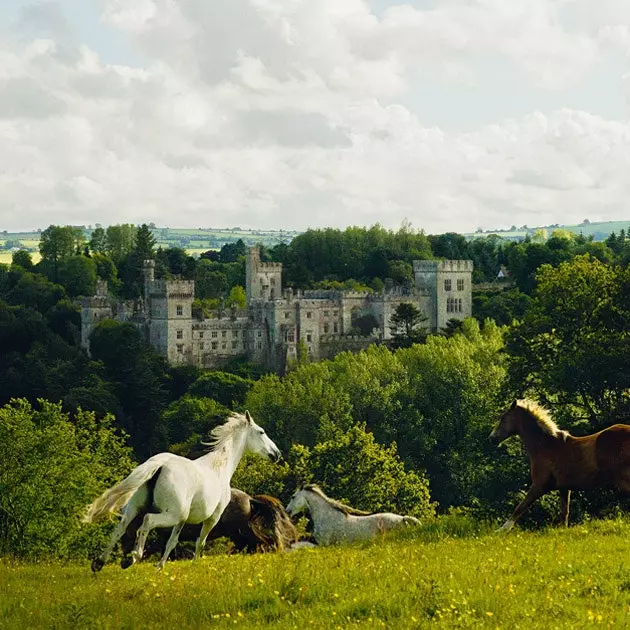
my kingdom for a castle
In Ireland, everyone needed a castle. Anglo-Normans they made them fashionable in the twelfth century , with ramshackle buildings, surrounded by moats and crenellated walls to withstand hordes of catapult launches, with towers, drawbridges and gates with bars and machicolations. Impressed, the native Irish 'kings' began building castles. And in the Middle Ages there were literally hundreds of Irish kings ruling large territories like estates or small stony fields. ** Ireland became the country with the most castles on earth.** Between Antrim and Wexford There are thousands of castles scattered across the country, from romantic vine-choked towers, abandoned to the rain for centuries, to fully restored fantasies where rows of armor line the halls.
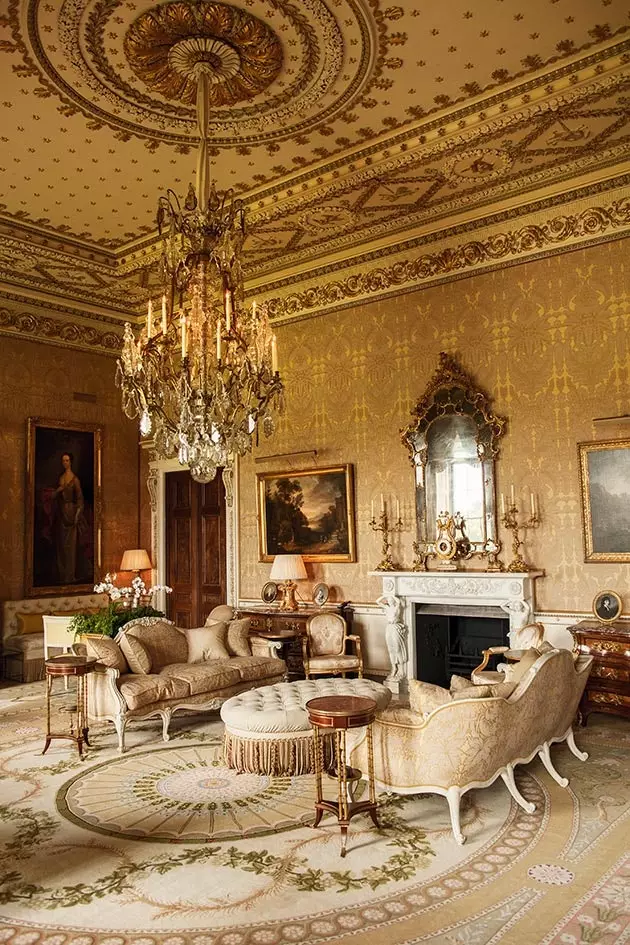
The great golden hall at Ballyfin.
The castles trace a painful past . They tell stories of susceptibility of the country to foreign invasions , as well as the inability of the rulers to agree. Your rooms are full of tales of defeat and exile . The melancholic romance of Ireland hides within its old walls. But the construction of castles in Ireland was not solely for defense. They were raised by prestige and appearance. The moment a king added another floor, the neighbor down the street had to do the same so as not to expose his royalty.
The castles became centers of culture, of identity, of longing. This was the place where musicians gathered and troubadours sang, where poets waited in the courtyard for inspiration to write their verses, and boastful soldiers prowled in search of fencing matches. The strength of a castle, its reputation and its festivals were a measure of the character of the community. They were a source of pride for both the peasant and the men with robes and scepters. They were undoubtedly reflected in the literature. Castles can be seen in the praise poems of the Middle Ages as heavenly palaces. Fear Flatha Ó Gnímh writes about Shane's Castle, formerly called Eden Duff Carrick , What "a bright vision over the waters of the lake just like a cloud." Tadhg Dall Ó Huigínn extolled: "White pearls between streams chatter, white walls between blue hills..., shining castles..." while a contemporary gave the castle qualities of a sentient creature and promised: "It's time to beat your heartache ”.
I was born in the shadow of an Irish castle. I remember as a child going to see the ruins of Dunluce, which is still my favourite, in the antrim Coast, and its empty windows looking across the sea to Scotland. And today I'm heading home to explore a handful of castles that travelers can make their own for a few days, accompanied by my seven-year-old daughter. She tells me that she feels like an expert, having read a lot about them, and she is delighted by the opportunity to sleep in one, to immerse herself in a storybook. I also.
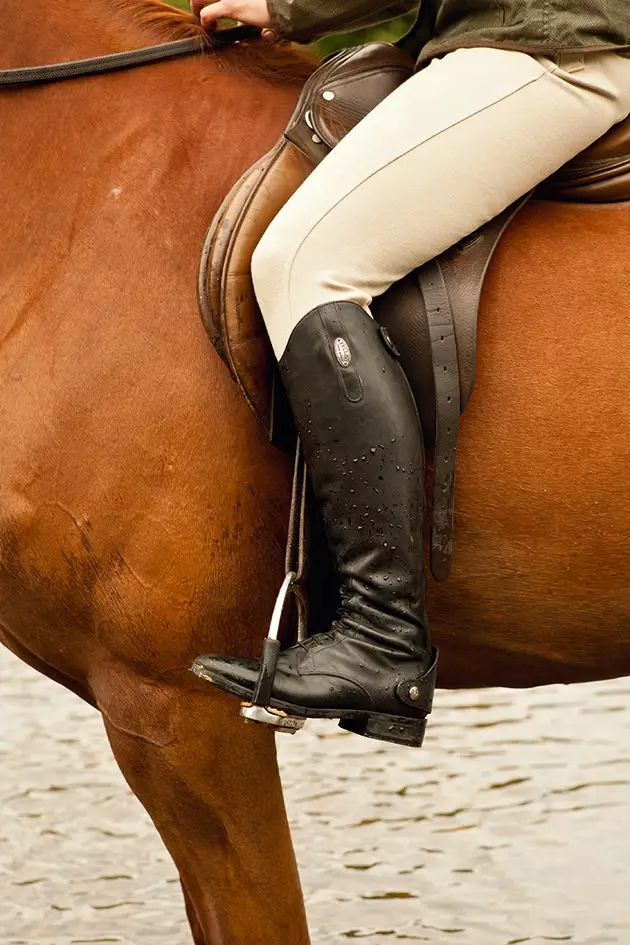
Horseman at Lismore Castle.
LISMORE
It's easy to understand why Fred Astaire was in no hurry to leave And it wasn't just because of the Madden roadside pub attraction, where he became a regular. Despite his greatness, There is something about Lismore Castle that makes everyone feel at ease. . The road to Lismore is a green tunnel, that goes deeper and deeper into County Waterford. Through the hedgerows we can see lopsided fields and muddy cattle. We came to the river, the Blackwater, wide and copper-colored under heavy trees. Above is the castle with its wide battlemented façade amid mists. “Look, honey,” I tell her. And Sophia's nose is already glued to the window. A moment later we slipped down the rabbit hole. The castle gates opened. A butler appeared with an umbrella to take us inside. We passed through vaulted reception rooms, where the fire crackled in the grate.
On a belvedere overlooking a magnificent stretch of the Blackwater, they served **afternoon tea: cucumber and salmon sandwiches, clotted curd scones, cakes and tons of tea.** Lismore is the Irish cousin of Chatsworth House, part of the estate of the Duke and Duchess of Devonshire. It was originally a monastery , founded by Saint Carthage in 635 and one of the great seats of learning in Europe until the Viking occupation disrupted education. In the 11th century the monastery had been replaced by a large Anglo-Norman castle. In the 16th century, the entire estate was acquired by Sir Walter Raleigh , a busy man in a complicated era.
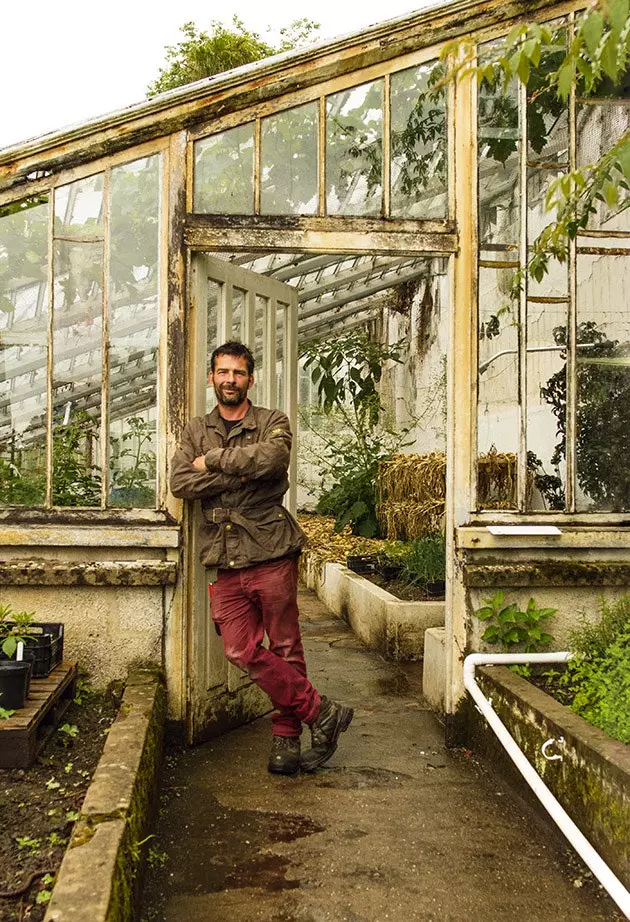
Lismore Castle's head gardener, Darren Topps.
“Being in Lismore is like being in a dream” says Lord Burlington, the eldest son of the current Duke. “Partly because the layers of history are tangible. Once, when I was a boy, I put my hand into a hole in a wall in Lismore and felt the outline of a cannonball, which must have been there since the 1640s. And when you run your hand over the moss of an ancient wall you can't help but wonder if Sir Walter would have done the same." . The guest book is an interesting read. People say that Edmund Spenser I would have written part of The Fairy Queen here. Lady Georgiana Spencer she passed through here by virtue of her curious marriage to the fifth duke. Lady Caroline Lamb she wandered around this place for several weeks, complaining of the damp and cold, while she recovered from her disastrous love affair with Lord Byron. In a more recent century they stayed Lucian Freud, John Betjeman, Cecil Beaton, Patrick Leigh Fermor and the young man John F. Kennedy. And of course, fred astaire : His sister had married the younger brother of the 10th Duke. Under Fred's signature, in the guest book, she wrote: "I thought he would never leave."
It is one of the largest castles in Ireland , with the world's most important collection of pugin furniture and a smug baronial Great Hall. In Lismore nothing is austere . Their 15 rooms and elegant garden (the oldest in Ireland) do not interfere with its homely and cozy charm. Lismore gives a feeling of labyrinthine country house . here you will see muddy boots from long walks, fishing rods and board games, comfortable sofas and Sunday papers, cozy window seats and wood burning fireplaces. Of course, any castle requires moments of formality.
We could have been just us, but Sophia is enthusiastic about dinner etiquette each night: placing her clothes on the loft bed, bathing in a tub the size of Norfolk, criticizing her father's choice of shirt. After a few **drinks by the fire (apple juice for Sophia, Irish whiskey for me)** we dined amidst a gleaming array of family silver and cut glass, under stark portraits of the owners by Van Dyke in the seventeenth century. Sophia takes care of the table bell that alerts the butler when we're ready for the next course. So we come to the pudding. And we feel like Fred. We don't want to get out of here.
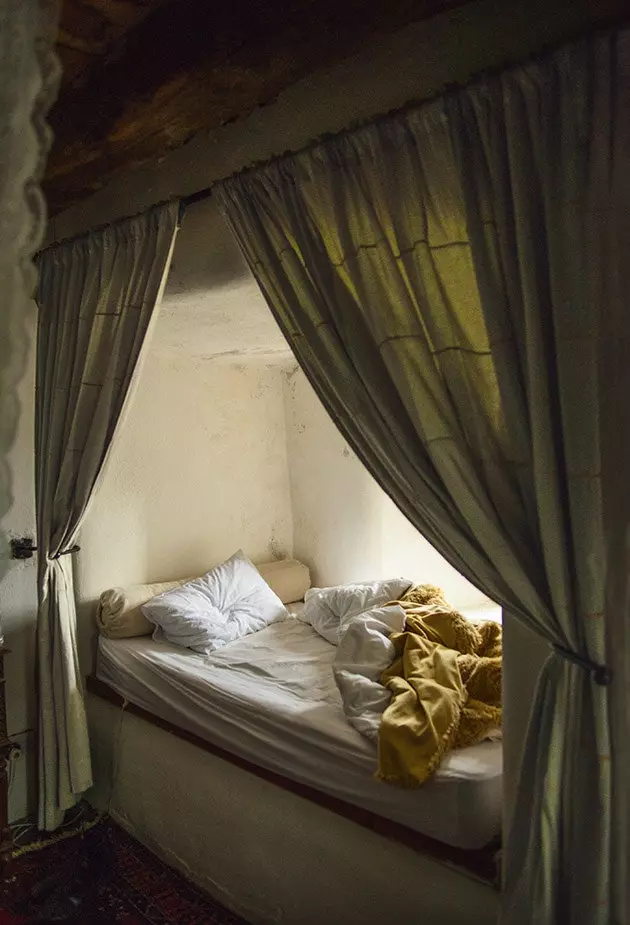
One of Ballybur's bedrooms.
BALLYBUR
Ballybur Castle is a medieval ghost at the end of a state road in county Kilkenny . The most iconic type of Irish castle, this is a tower house (stone tower, both to defend and to live in) that stands in the middle of fields and forests. The exterior is grim and bleak, with lichen-stained rows of jagged stone, ivy-speckled battlements, and narrow-slit windows. Inside, behind an open door with battering rams, you find **the ideal place for a romantic getaway**. The battle is over. Let the fun begin. The ground floor kitchen has a country touch: wooden table, pile of white ceramics and armchairs by the fire. I follow a restless Sophia around the spiral staircase up to three lovely bedrooms with bathrooms hidden in corners , and up again to a large dining room with a minstrel's gallery and finally to the top floor, which used to be the Great Hall.
Today there is one with a chimney the size of a minibus . Enchanted in **a castle that could have been Rapunzel's**, Sophia stays with the canopy bed , in which she propped her teddy bear on the pillows, and she leaves me the cozy room next door with the vaulted ceiling and pirate chest.
In the Middle Ages it was said that there more than 8,000 tower houses in Ireland , each proclaimed the status and power of a clan chief. Ballybur comes with the usual: ghost, garderobe (euphemism for medieval hanging latrine), prison and a murder hole. The ghost doesn't seem to like our appearance: apparently he's quite picky about his guests. Fortunately, modern plumbing has replaced the latrine. The jail was a small box under the flagstones, next to the Great Hall; the assassins hole was an ingenious fix where stones, boiling oil, poisonous snakes were dropped or whatever the fancy of anyone who hadn't rung the bell for. Every house should have one.
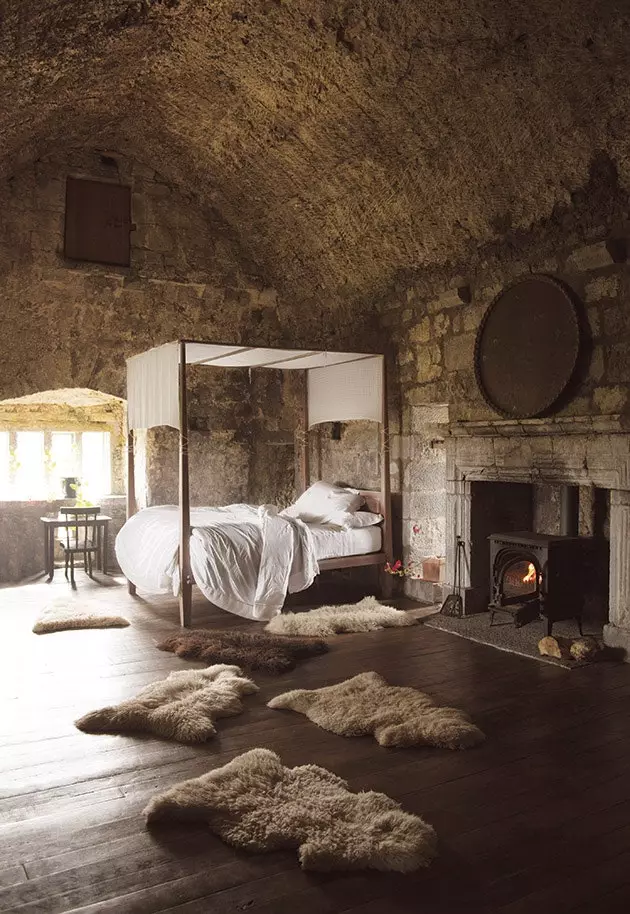
One of six rooms in the 15th century Ballyportry Castle.
Ballybur had a brief heyday (it hosted a papal legate in the 1640s) and the English military Cromwell blew the roof off in the early 1650s, followed by centuries of decline. During the 1970s it was inhabited by two older women who lived modestly downstairs. It was just when Frank and Aifric Gray located Ballybur in the window of an estate agency in Kilkenny. They bought it for €28,000 . They believed that the remodeling would take five years. After 25 years, they are still putting the finishing touches to what has become a lifelong mission.
ireland is full of castles that are converted into castle kitsch , a style that is part Victorian and stately and part reminiscent of Antiques Roadshow: from red velvet curtains, heraldic upholstery, armor, endless gadgets and varnished furniture reminiscent of a medieval toy store. However, the Grays have given Ballybur the perfect castle aesthetic, a free and discreet style that enhances the architecture. Subtle-colored fabrics, oriental rugs, and cushions accent the exposed brick, ironwork, grand fireplaces, and soaring wooden ceilings. At night, with the Irish rains hitting the windows and the flickering candlelight illuminating ancient walls, I read stories to Sophia what could have happened here.
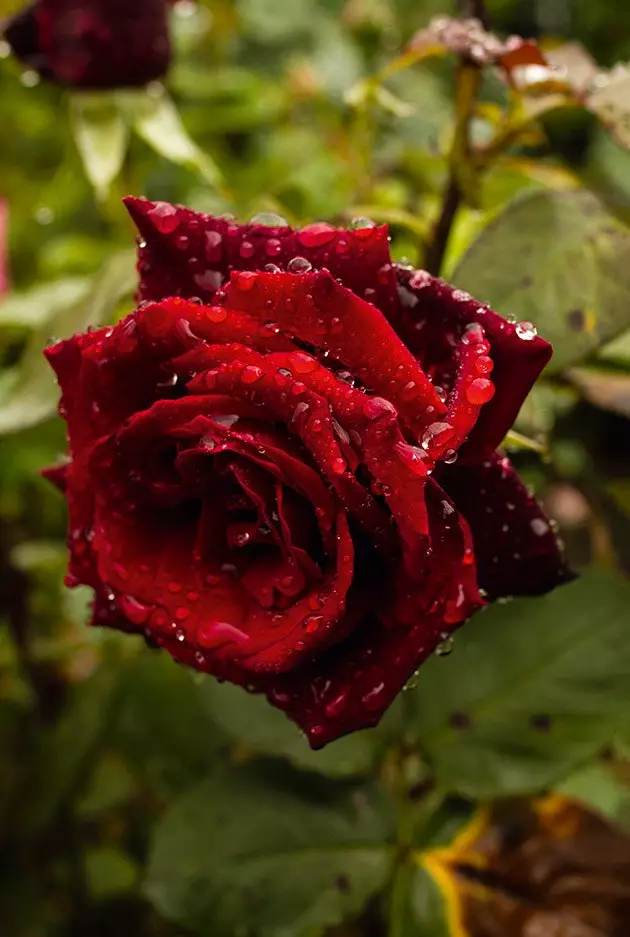
A rose in the elegant garden of Lismore Castle.
** BALLYFIN **
Ballyfin is not a castle at all . However it is the most elegant representation of the profound transformation of castles in Ireland. When ancient stone towers lay in ruins, when drafts could be measured on the Beaufort scale, or when the country was quiet enough that there was no need to keep a lookout for horned-helmeted outsiders; this was the kind of house they dreamed of castle owners: an elegant manor house in the middle of the estate.
The world that lies beyond is no longer rough terrain seen through narrow slits, but landscaped parks that can be seen from French windows. The drawbridge was gracefully replaced by semicircular steps; the Great Hall, for a room of leather books and Wedgwood vases, and the burning oil of the death hole, for a attentive butler and welcome glass of whiskey.
At Ballyfin, the transition took place in the 18th century, when the old elizabethan castle was torn down . In the 1820s, sir charles henry coote , one of the richest men in Ireland, built the present house, a regency masterpiece . While he supervised the work, his wife, Caroline, toured Europe handing out credit bonds wherever she went, while she picked up Roman mosaic floors, Italian fireplaces, Belgian chandeliers, and works of art that would have ruined less opulent fortunes. Everyone agrees that the result was the greatest house in Ireland.
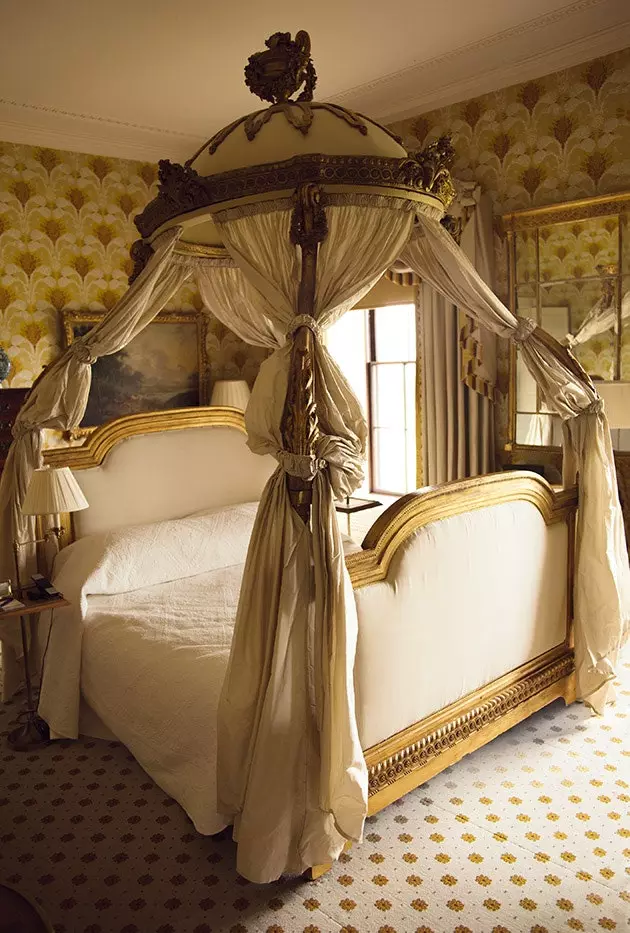
The Westmeath Room in the converted Ballyfin Castle.
A century later, with Irish independence, the Cootes sold Ballyfin to the Patrician brothers, who they turned it into a boarding school . For 80 years, schoolchildren at their graffiti-filled desks learned Latin conjugations in what was a ballroom , while the old house was disintegrating.
Ballyfin's restoration is as spectacular as the original construction. It was acquired by that kind of rich americans that the old European aristocracy dreamed of being: lovely souls with lots of money. Fred and Kay Krehbiel embarked on a project eight years in which they restored the house until achieve the greatness of its original state . The Roman mosaic at the entrance was resurrected and the magnificent marquetry floors were meticulously re-integrated. On the other hand, the cornice and friezes of the great golden hall they were reshaped. Likewise, the original palettes were rediscovered to paint the columns of the library. The conservatory , coated with rust, accessed from the library through a secret door, was also restored. In 2010, Ballyfin opened with the rank of luxury hotel with 15 rooms. This spring five more rooms have been unveiled. The result was simply irresistible. Ireland's grandest house is today one of its grand hotels.
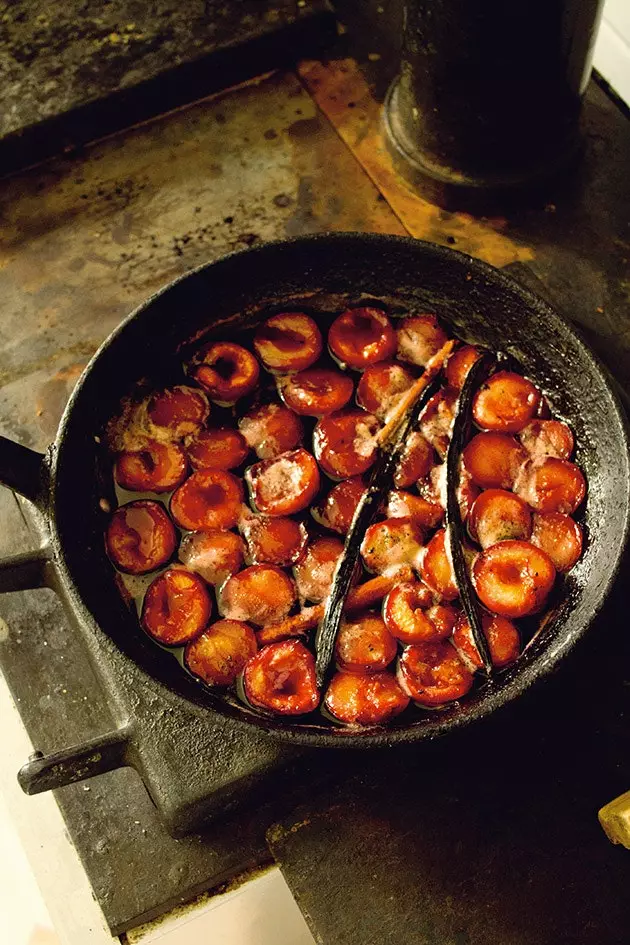
Vanilla Stewed Nectarines at Lismore.
BALLYPORTRY
Northwest of County Clare, we find a gloomy landscape of stone, water and sky . The moors are lost on the horizon. Wildflowers bloom between limestone slabs. black lakes they sit at the foot of disturbing hills. Battered by Atlantic winds, ** the Burren is made for castles.** Medieval fortresses and towers they look like natural creations , are guardians of this beautiful and severe country. Ballyportry is one of the most amazing , a _tower house_built in the 15th century for the O'Briens , descendants of Brian Boru , the High King of Ireland. This western region is believed to be remote and folksy . But in medieval times, when the sea was more reliable than the land, areas like the Burren were attached to the mainland.
in his day, Ballyportry once had a French wine cellar , Dutch tapestries, ceramics and silks from Spain, books and rosaries from Rome. This was not the fortress of a barbarian chieftain, but the home to an educated and sophisticated elite , the aristocrats of the Gaelic order, who prospered before the English arrived. The rebuilding of Ballyportry, in the 1960s, was the work of the American Bob Brown . When he discovered that his vices in New York - staying up late and drinking too much - were virtues in Clare , he decided to stay, and in a moment of madness he bought Ballyportry. Brown, a pioneer in the restoration of medieval tower houses, was an inspiration for many later renovators, such as Frank and Aifric Gray of Ballybur.
The current owners receive us. Siobhan and Pat Wallace have brought the intelligentsia back to the tower . Siobhan is an architect, while Pat, director of the National Museum in Dublin, is an archaeologist. delight us with a great dinner on your wooden table, a party with good food and a pleasant conversation in which we deal with various topics: from the ancient Gaelic order or the religious leader of Northern Ireland, Ian Paisley , to the rare wild flowers of the Burren area or the collapse of the role of sport in Irish identity. I take Sophia out for walks every day, visiting the megalithic dolmens of the highlands, skirting her mysterious fields in search of the rare wood martens, and visiting the wind-hollowed ruins of Kilfenora Cathedral.
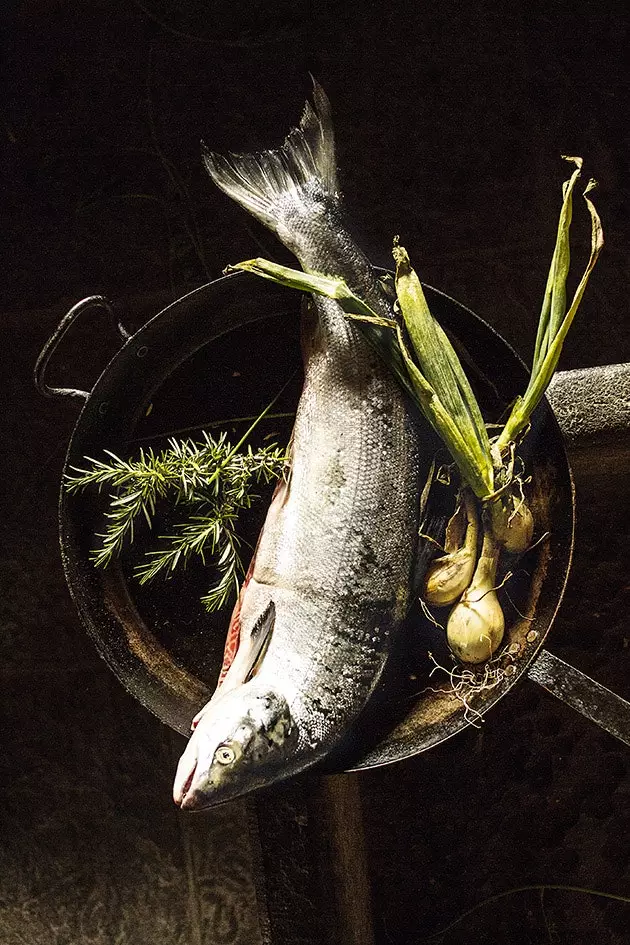
A wild salmon served in the Ballyportry kitchen.
One night by the fire Linnane's Pub , we delight in the drums of the Kilfenora Céilí Band . And another night, in the great hall at Ballyportry, I had a mediaeval moment . A fire burned in a grill large enough to roast an ox. From the large windows, I looked across the wetlands to a meadow where two donkeys were grazing. On the horizon I beheld the iconic shape of Mullaghmore . The wind whistled through the battlements.
It is possible that we have all walked through a castle, climbed its stairs or even poked our heads beyond the velvet ropes to try to pry into its rooms. But at Ballyportry I have been able to cross those ropes. In the Great Hall, under wooden ceilings, I have added fuel to the fire, I have lit iron chandeliers between stone walls, I have sunk into the sofa with Flights of the Earls , which captures the moment in which the great chieftains of Ireland fled the country to go into exile on the continent. And for a moment I have felt very close to the people who lived here , who sat by this same fireplace and listened to the same winds in a time long gone when these castles were the center of the culture and nostalgia that surrounds all of Ireland . Until Sophia arrived and she asked me to play princesses and pirates. Then we chase each other up and down in what William Butler Yeats used to call "This winding, circular, spiral staircase Ferris wheel."
* This report is published in number 86 of the Condé Nast Traveler magazine for July-August and is available in its digital version to enjoy it on your preferred device.
You may also be interested in:
- Celtic destinations: Ireland, Brittany, Scotland and Galicia
- Top 50 most beautiful places in Ireland
- The 50 photos that make you want to travel to Ireland - The 10 most beautiful towns in Ireland - Twelve plans to experience Ireland this summer
- Truths and lies of the (multiple) castles of Dracula
- All the news about Palaces and Castles
